Abstract
1. Three prostaglandin antagonists have been examined for their ability to block PGE2 and PGF2α on human, guinea-pig and isolated rat gastrointestinal muscle.
2. 7-oxa-13-Prostynoic acid was either a non-selective antagonist, or was ineffective on the tissues studied; it had marked spasmogenic activity on the rat fundus.
3. 1-Acetyl-2-(8-chloro-10,11-dihydrodibenz (b,f)(1,4) oxazepine-10-carbonyl) hydrazine selectively antagonized the excitatory effects of PGE2 and PGF2α in guinea-pig and rat tissues, but not in human muscle.
4. Polyphloretin phosphate selectively antagonized the excitatory effects of prostaglandins in both human and guinea-pig muscle preparations, but it caused stimulation of the rat fundus.
5. All the antagonists lowered the tone in many tissues. They also reduced contractions caused by potassium.
6. None of the compounds blocked the inhibitory effect of PGE2 on intestinal circular muscle.
7. The implication of these results on the nature of prostaglandin receptors, and the value of each compound as a prostaglandin antagonist are discussed.
Full text
PDF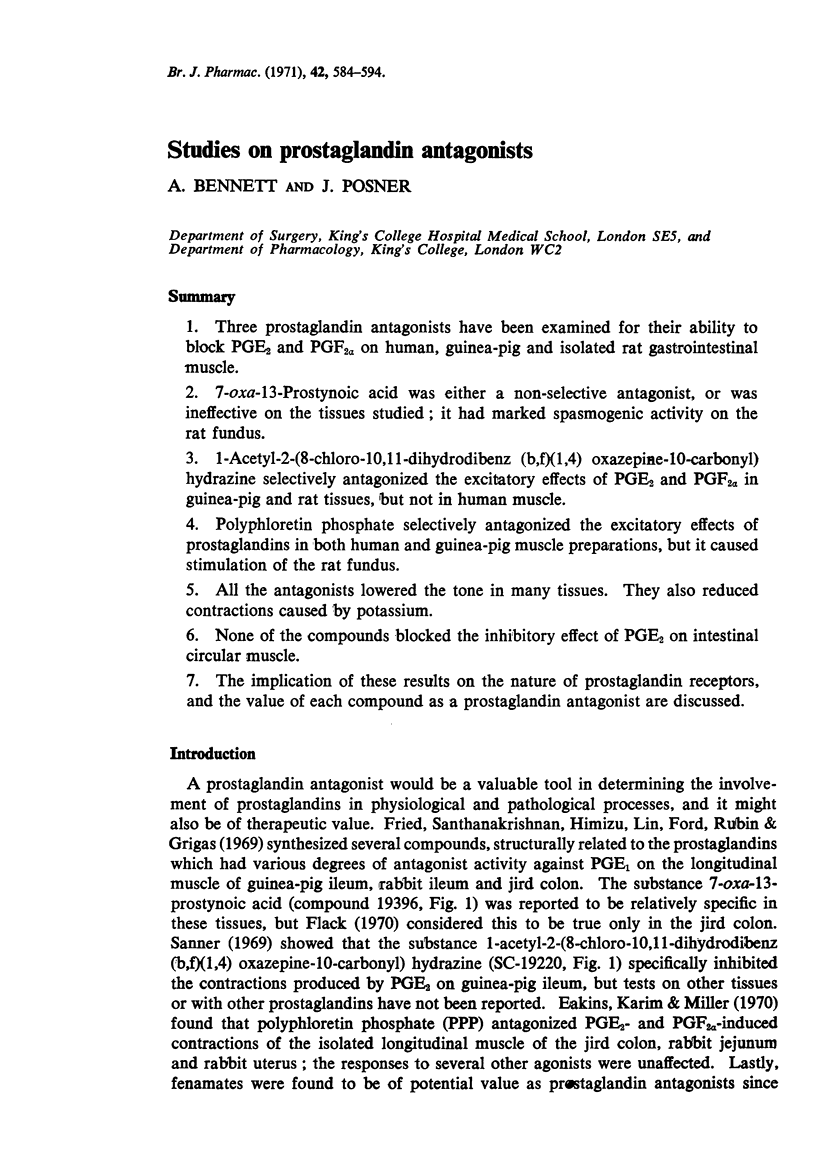
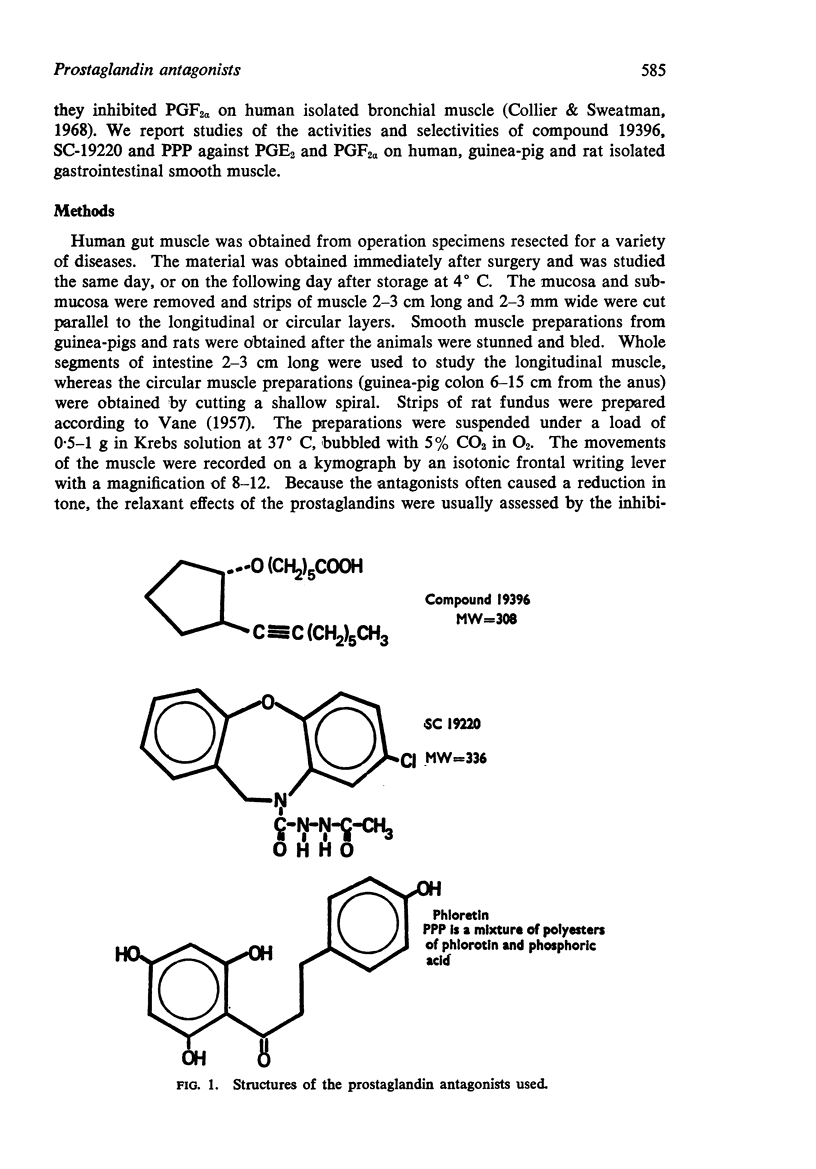
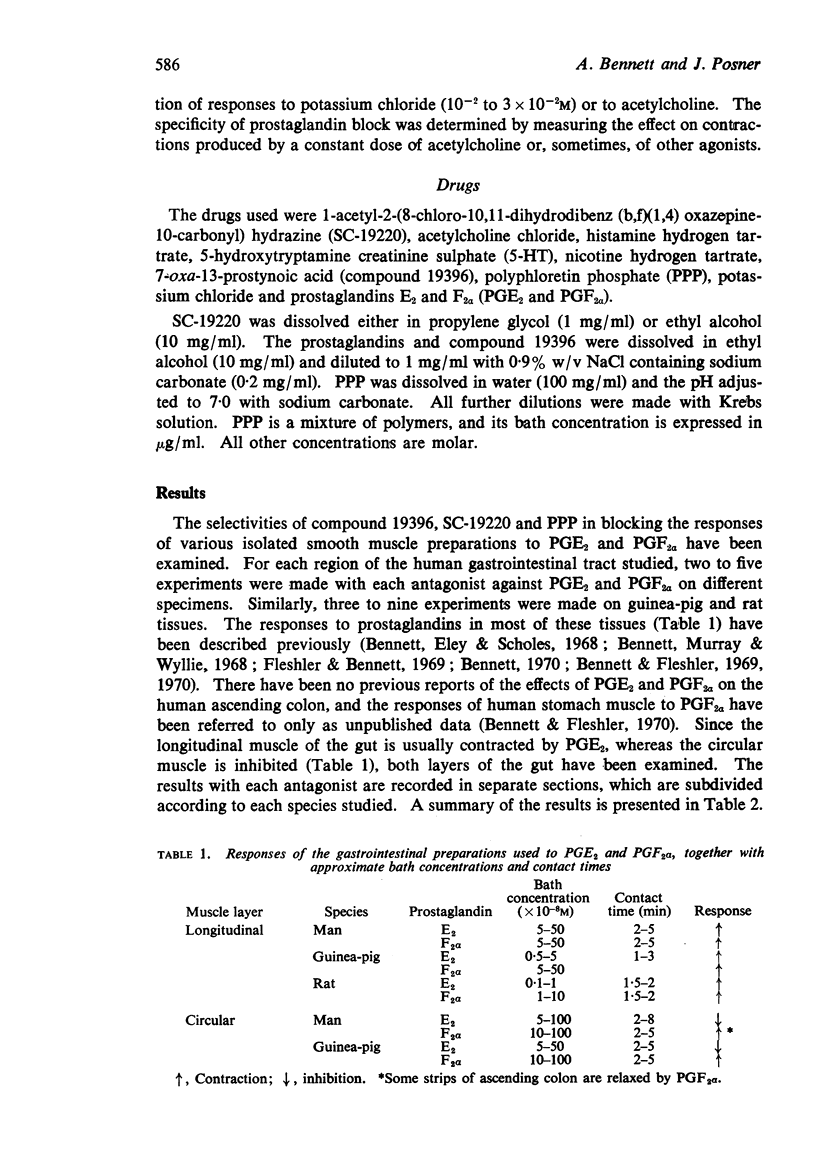
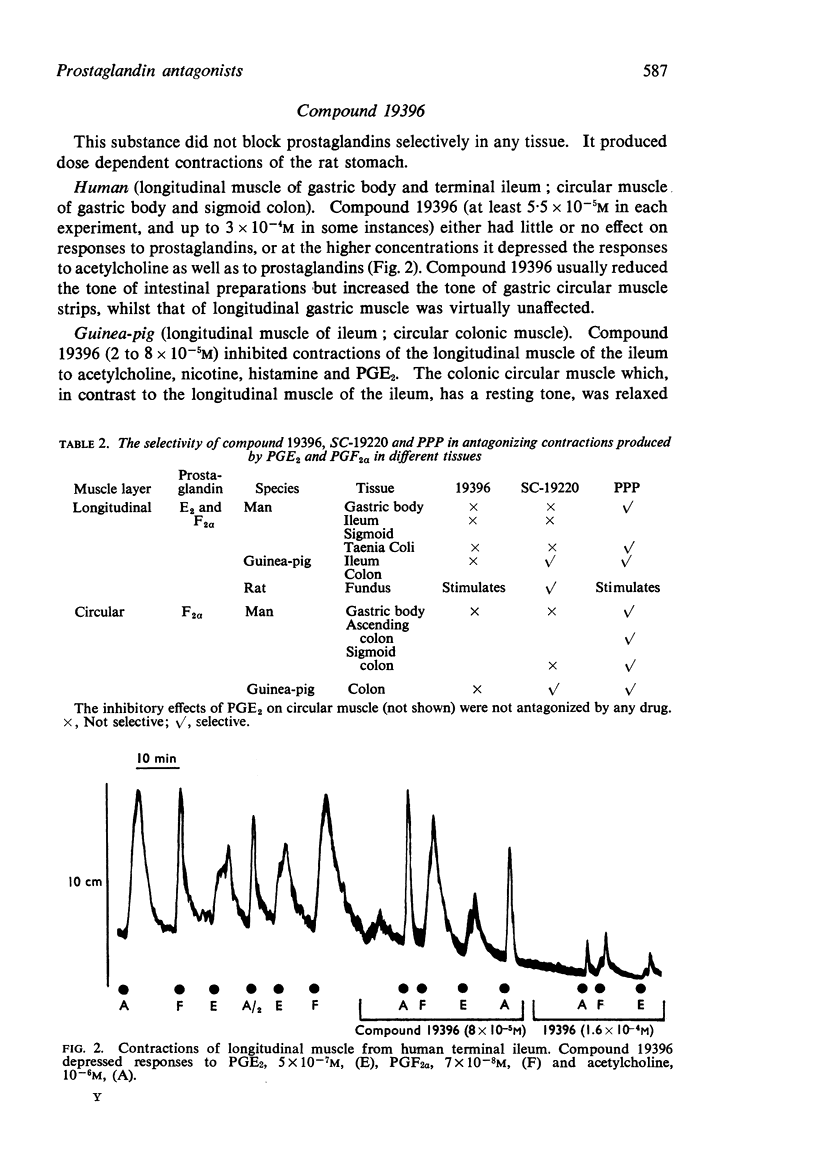
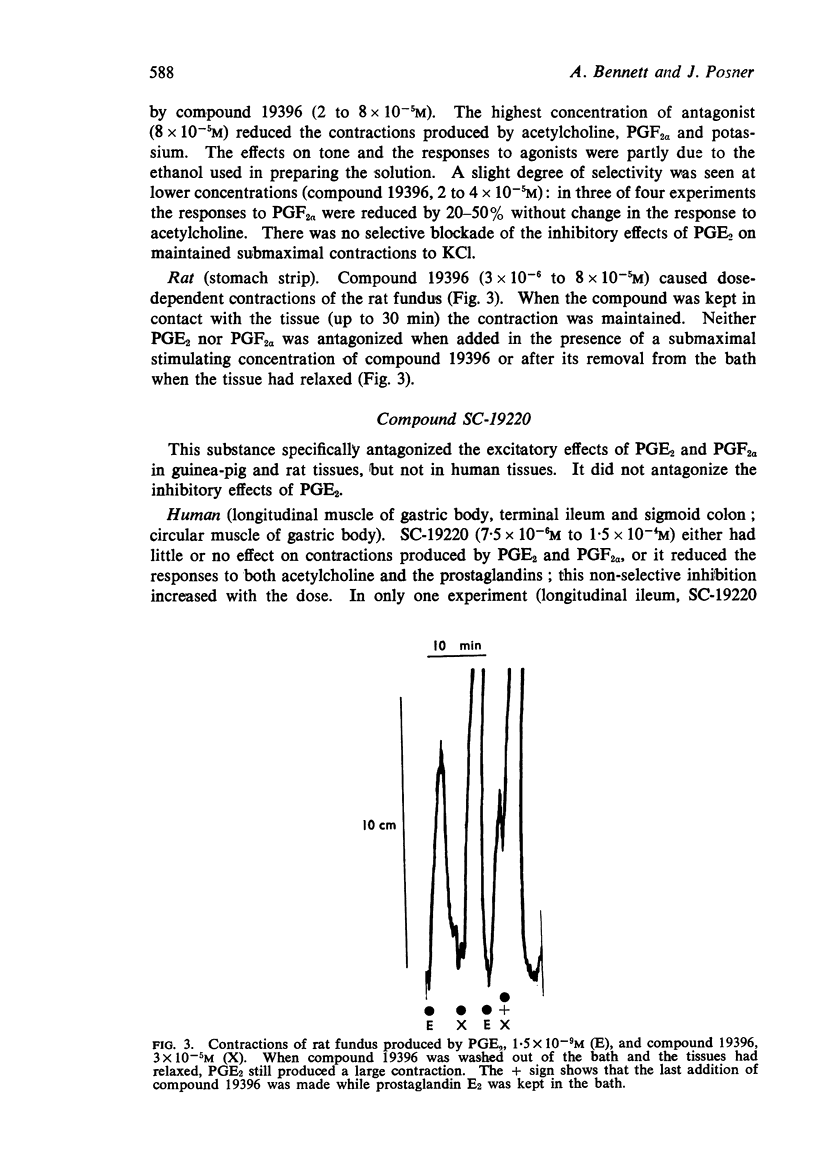
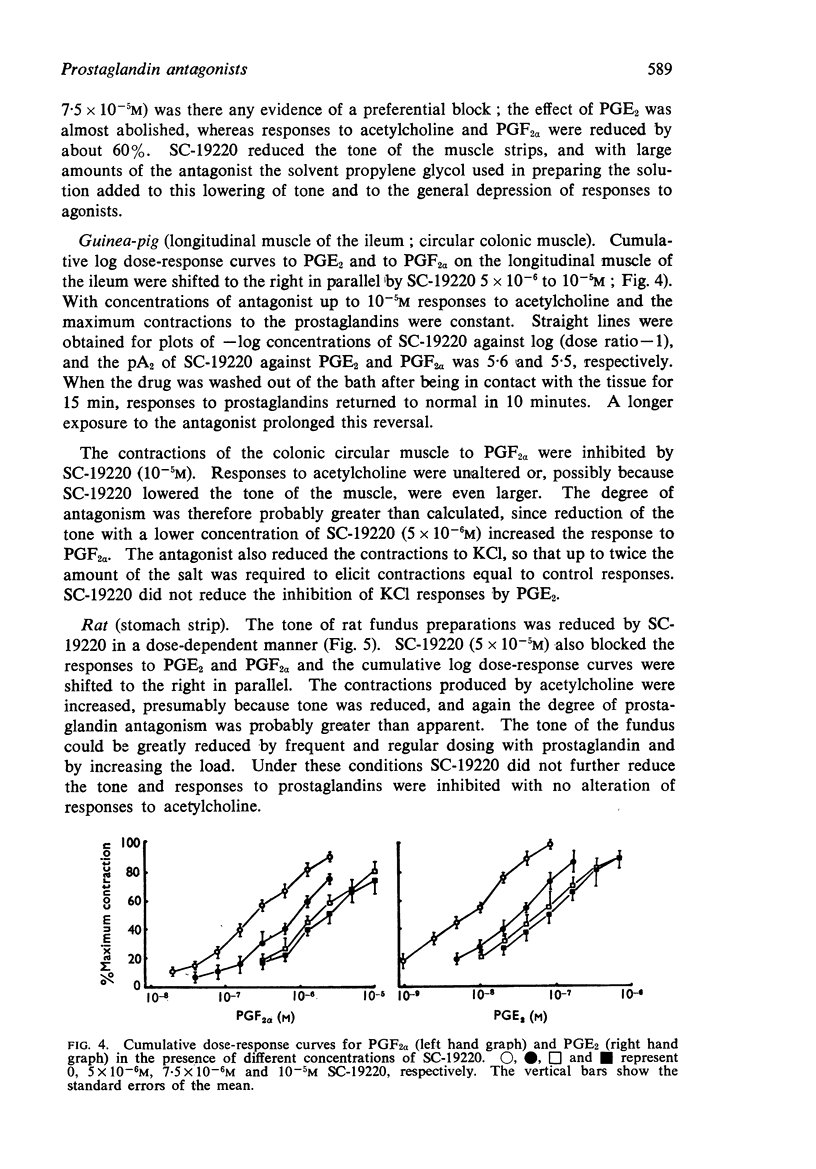
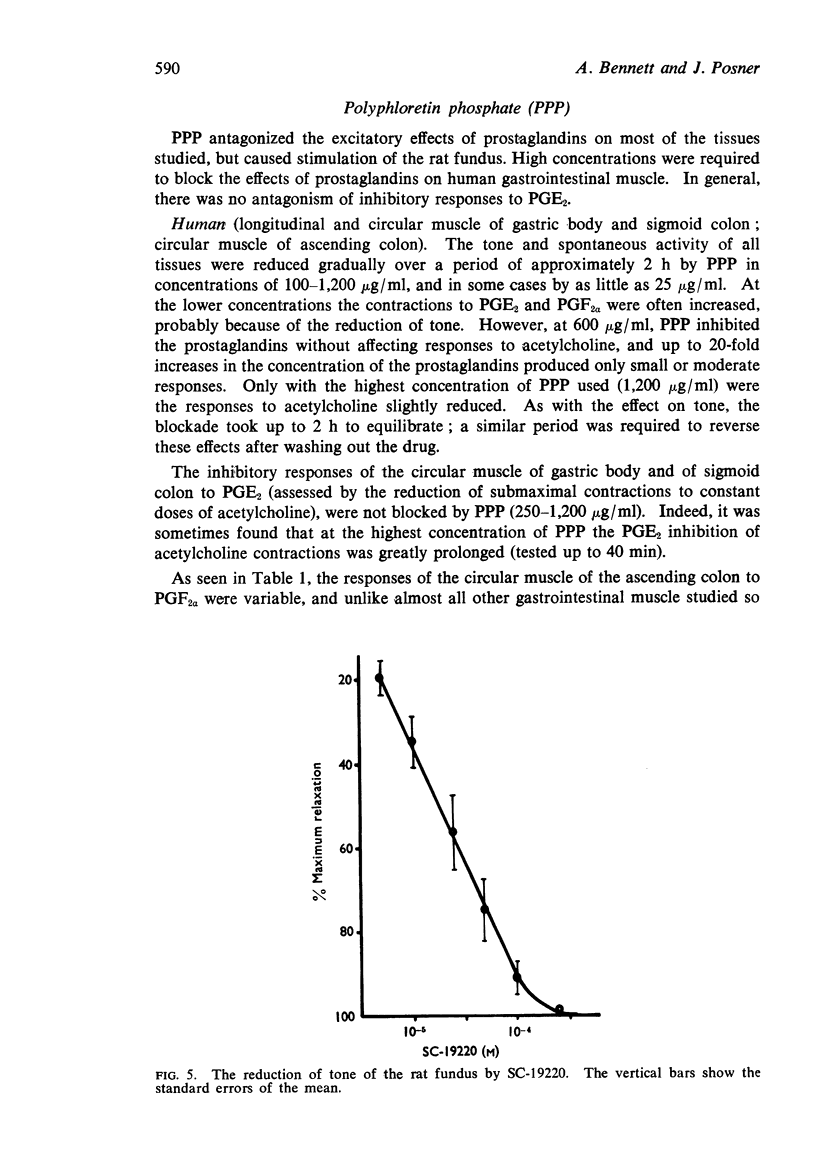
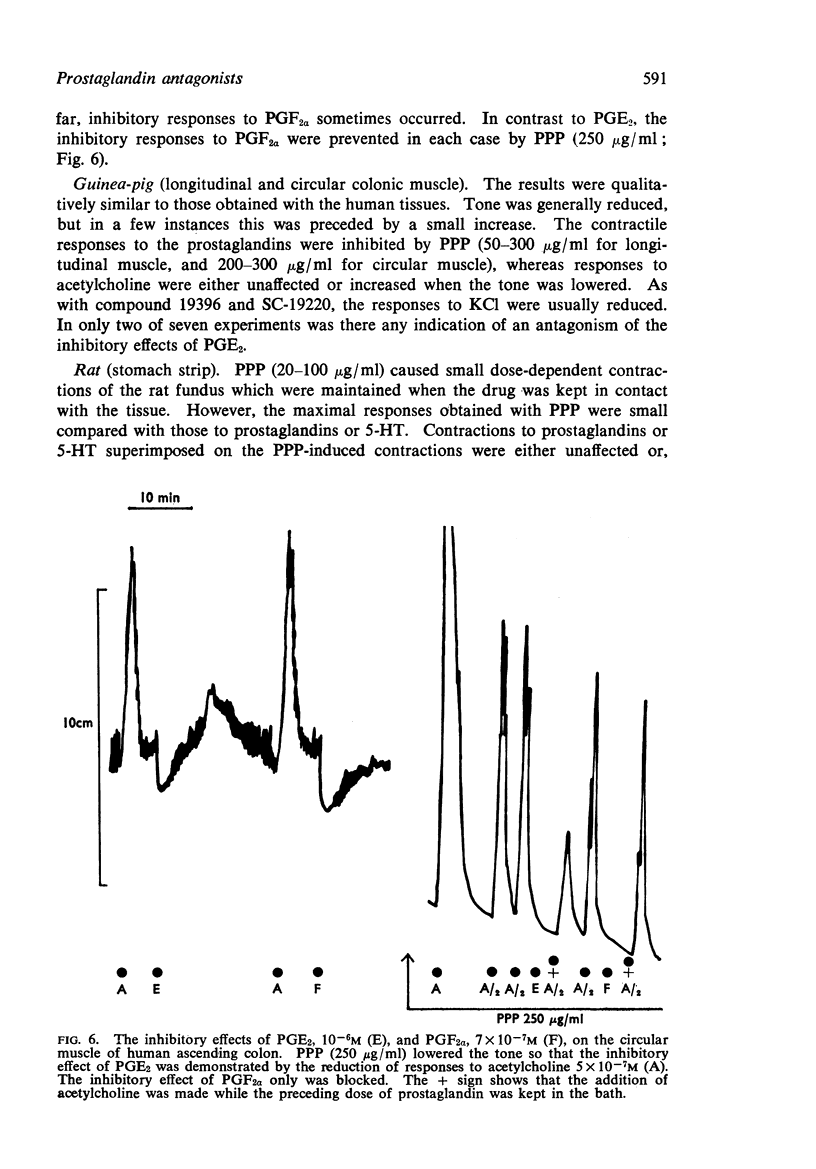
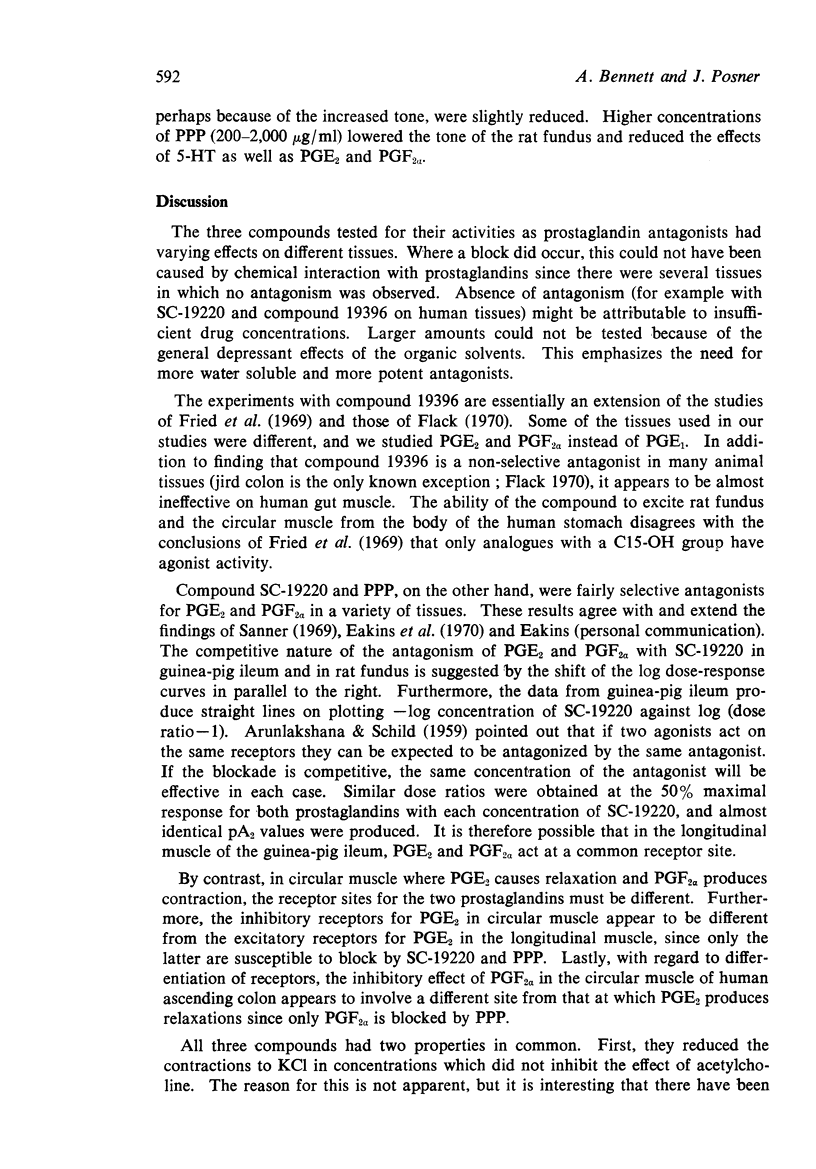
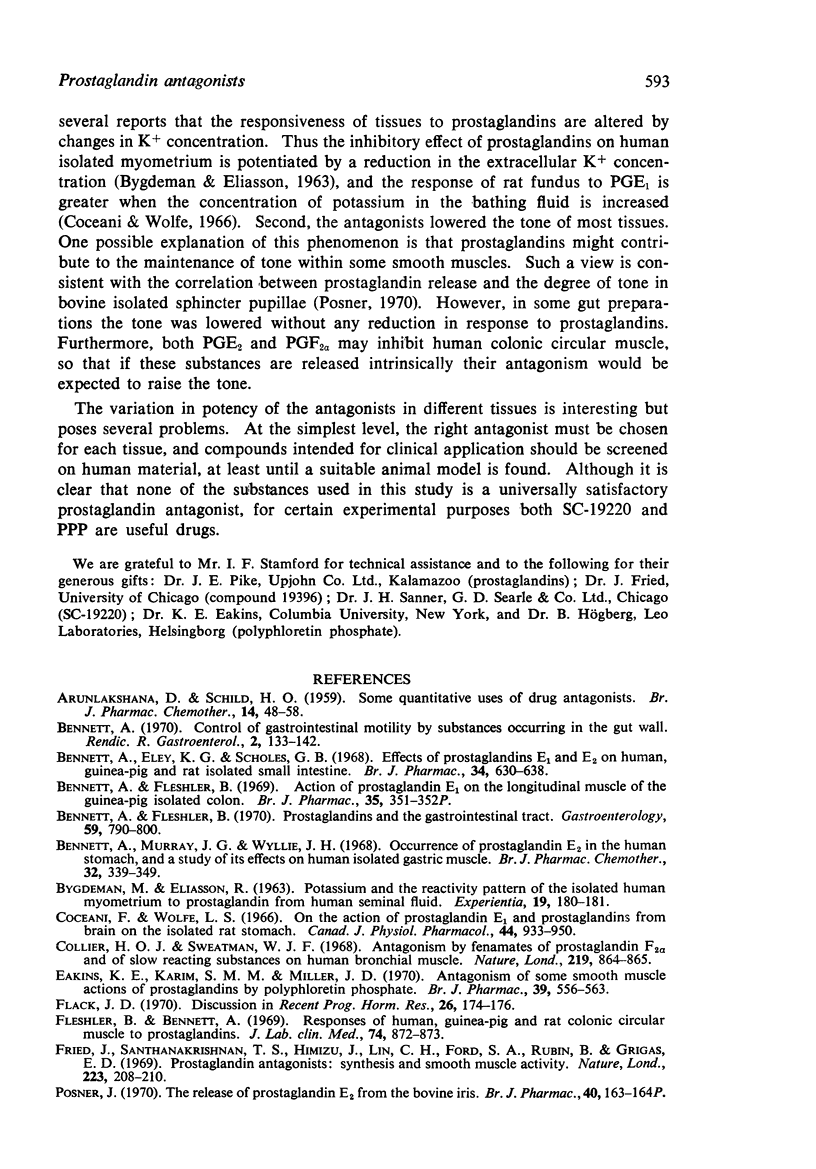
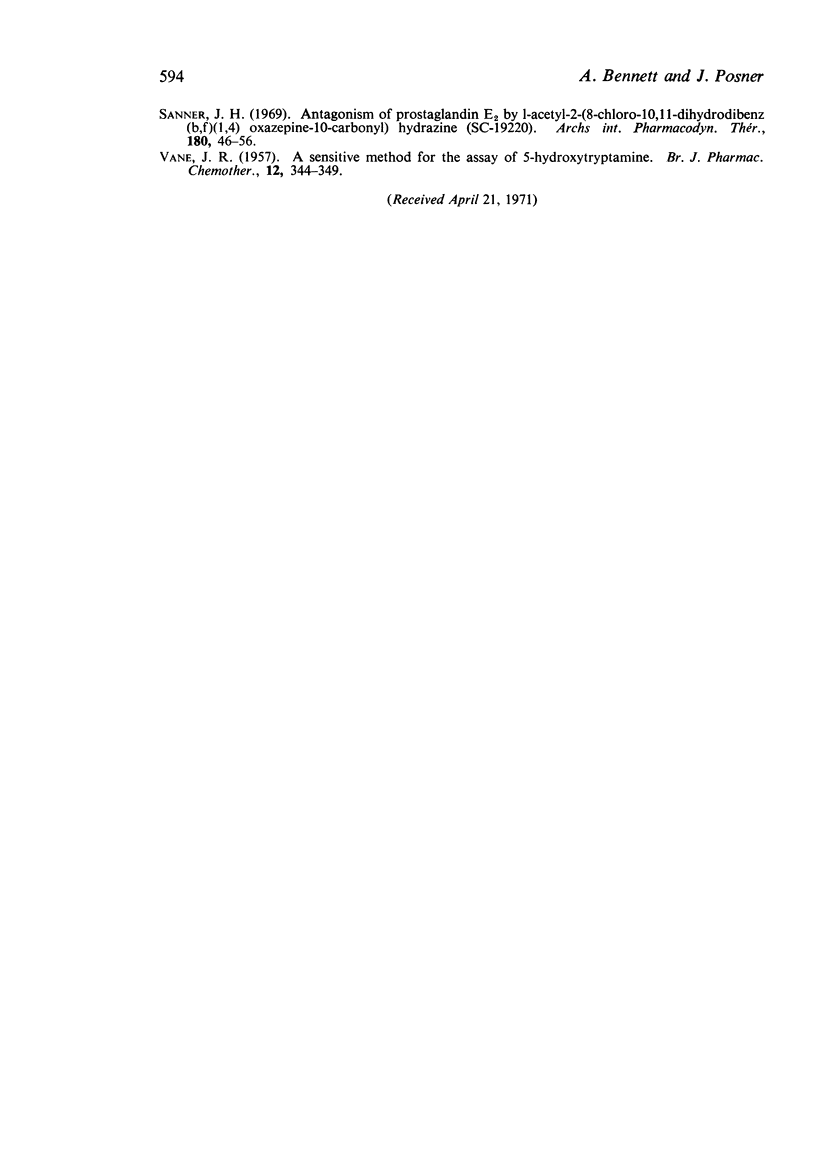
Selected References
These references are in PubMed. This may not be the complete list of references from this article.
- ARUNLAKSHANA O., SCHILD H. O. Some quantitative uses of drug antagonists. Br J Pharmacol Chemother. 1959 Mar;14(1):48–58. doi: 10.1111/j.1476-5381.1959.tb00928.x. [DOI] [PMC free article] [PubMed] [Google Scholar]
- BYGDEMAN M., ELIASSON R. Potassium and the reactivity pattern of the isolated human myometrium to prostaglandin from human seminal fluid. Experientia. 1963 Apr 15;19:180–181. doi: 10.1007/BF02172296. [DOI] [PubMed] [Google Scholar]
- Bennett A., Eley K. G., Scholes G. B. Effects of prostaglandins E1 and E2 on human, guinea-pig and rat isolated small intestine. Br J Pharmacol. 1968 Nov;34(3):630–638. doi: 10.1111/j.1476-5381.1968.tb08492.x. [DOI] [PMC free article] [PubMed] [Google Scholar]
- Bennett A., Fleshler B. Prostaglandins and the gastrointestinal tract. Gastroenterology. 1970 Nov;59(5):790–800. [PubMed] [Google Scholar]
- Bennett A., Murray J. G., Wyllie J. H. Occurrence of prostaglandin E2 in the human stomach, and a study of its effects on human isolated gastric muscle. Br J Pharmacol Chemother. 1968 Feb;32(2):339–349. [PubMed] [Google Scholar]
- Coceani F., Wolfe L. S. On the action of prostaglandin E1 and prostaglandins from brain on the isolated rat stomach. Can J Physiol Pharmacol. 1966 Nov;44(6):933–950. doi: 10.1139/y66-116. [DOI] [PubMed] [Google Scholar]
- Eakins K. E., Karim S. M., Miller J. D. Antagonism of some smooth muscle actions of prostaglandins by polyphloretin phosphate. Br J Pharmacol. 1970 Jul;39(3):556–563. doi: 10.1111/j.1476-5381.1970.tb10363.x. [DOI] [PMC free article] [PubMed] [Google Scholar]
- Fried J., Santhanakrishnan T. S., Himizu J., Lin C. H., Ford S. H., Rubin B., Grigas E. O. Prostaglandin antagonists: synthesis and smooth muscle activity. Nature. 1969 Jul 12;223(5202):208–210. doi: 10.1038/223208a0. [DOI] [PubMed] [Google Scholar]
- Posner J., Paterson G. The release of prostaglandin E2 from the bovine iris. Br J Pharmacol. 1970 Sep;40(1):163P–164P. [PMC free article] [PubMed] [Google Scholar]
- Sanner J. H. Antagonism of prostaglandin E2 by 1-acetyl-2-(8-chloro-10,11-dihydrodibenz (b,f) (1,4) oxazepine-10-carbonyl) hydrazine (SC-19220). Arch Int Pharmacodyn Ther. 1969 Jul;180(1):46–56. [PubMed] [Google Scholar]
- VANE J. R. A sensitive method for the assay of 5-hydroxytryptamine. Br J Pharmacol Chemother. 1957 Sep;12(3):344–349. doi: 10.1111/j.1476-5381.1957.tb00146.x. [DOI] [PMC free article] [PubMed] [Google Scholar]


